Star Cluster Astrophotography
We have imaged many star clusters on our hunt to capture all Messier objects. The Messier catalog contains 56 Star Clusters, 29 globular clusters, and 27 open clusters.
For star clusters, we recommend spending an hour of total exposure time. Even with a low total exposure time they look great, however, some are complex and require more time. The Pleiades Cluster (M45) is a great example because it contains nebulous gas illuminated by the stars.
Further below you will find posts on star clusters we have imaged. Read more about the target, the gear we used, as well as all the acquisition details.

How Many Types of Star Clusters are there?
There are four types of star clusters known but only two types are found in the Milky Way galaxy. These are Globular Clusters and Open Clusters. The other two are found far out of our galaxy: Intermediate and Faint Fuzzies.

1) Globular Clusters
In two words, Globular Clusters are old and rich.
These almost always appear round and very busy. There are about 150 globular clusters in our Milky Way.
Do you think that living on a planet orbiting one of these stars means it is always daytime?
Imagine hundreds of "suns" in your sky, 24/7.
2) Open Clusters
Unlike Globular Clusters, these are young and much less populated.
1,100 (and counting) Open Clusters have been discovered in the Milky Way galaxy. The most famous ones are the Pleiades and the nearby Hyades, both easily visible to the naked eye.
Most are home to just a few thousand stars, loosely bound by gravity.

3) Intermediate Clusters
Only a few of these types of clusters have been discovered, and they were all in M31 (The Andromeda Galaxy).
They look like Globular clusters but are much larger and there is significantly more space between each star.
These clusters are so huge that they are defined as being between a globular cluster and a dwarf galaxy.

4) Faint Fuzzies
Another type of star cluster we can't see is faint fuzzies.
Just like Intermediate Clusters, these are much larger in size and are not found in the Milky Way.
They have only been discovered in lenticular galaxies and appear to be located in the ring area around the galaxy's center.
Love learning about astrophotography? Support us on Patreon and see the benefits for each tier.
Star Cluster Astrophotography Resources
Check out all the star cluster photographs we've taken in the posts below. We outline what gear we used, the time spent on each targets, and the acquisition details.

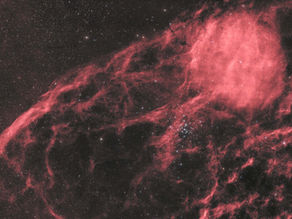
Messier 36 - The Pinwheel Cluster Astrophotography in Auriga
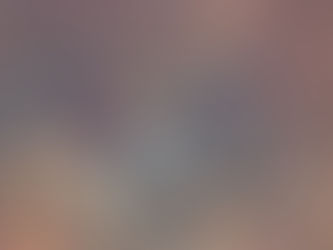

M7 - Ptolemy's Cluster in Scorpius | Astrophotography


Caroline's Rose - Open Cluster with IFN in Cassiopeia Astrophotography


M38 - The Starfish Cluster Astrophotography


M9 - Globular Cluster in Ophiuchus Astrophotography


M41 - The Little Beehive Cluster Astrophotography


M14 - Globular Cluster in Ophiuchus | Astrophotography Pictures and Tips


M23 - Open Cluster In Sagittarius | Astrophotography


M72 - Globular Cluster in Aquarius | Astrophotography Pictures and Tips


M73 - Asterism in Aquarius | Astrophotography Pictures and Tips


The Hyades Mosaic - The Closest Open Cluster to Earth | Astrophotography


M75 - Globular Cluster in Sagittarius | Astrophotography Tips & Pictures


M15 - The Pegasus Globular Cluster With IFN | Astrophotography


M12 - The Gumball Cluster in Ophiuchus | Astrophotography Tips & Pictures


Messier 26 - Open Cluster in Scutum | Astrophotography Tips & Pictures


M44 - The Beehive Cluster in Cancer | Astrophotography Tips & Pictures


Messier 24 - The Sagittarius Star Cloud | Astrophotography Tips & Pictures


Messier 53 - Globular Cluster in Coma Berenices Astrophotography


Messier 93 - Open Cluster in Puppis | Astrophotography Tips & Pictures


Messier 48 - Open Cluster in Hydra


Messier 37 - The Salt and Pepper Open Cluster in Auriga


NGC 869 & NGC 884 - The Double Cluster in Perseus Astrophotography


Messier 107 - A Loose Globular Cluster in Ophiuchus


Messier 92 - A Bright and Impressive Globular Cluster


Messier 5 - A Globular Cluster in Serpens


Messier 3 - 1 Hour on a Bright Globular Cluster


M46 and M47 - Two Open Clusters and a Hidden Nebula Astrophotography


Messier 13 - The Great Globular Cluster in Hercules


Messier 67 - The King Cobra Cluster in Cancer


Messier 50 - An Open Cluster in Monoceros


Messier 56 - Backyard Astrophotography Without Filters or Calibration Frames


Messier 45 - The Pleiades Star Cluster


Messier 29 - An Open Cluster in (Almost) Heaven


Messier 30 - A Globular Cluster in Capricornus


Messier 10 - A Globular Cluster in Ophiuchus


Messier 4 and Antares in Scorpius - A Cluster near Nebulosity

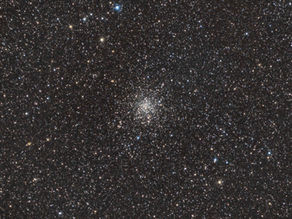
Messier 71 - Globular Cluster in Sagitta

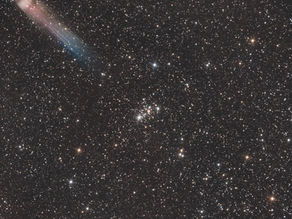
Messier 103 - Open Cluster in Cassiopeia with a Twist


Messier 2 - Globular Cluster in Aquarius


Messier 35 - Open Cluster in Gemini

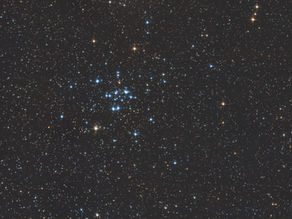
Messier 34 - Open Cluster in Perseus


M11 - The Wild Duck Cluster | Astrophotography Tips & Pictures









